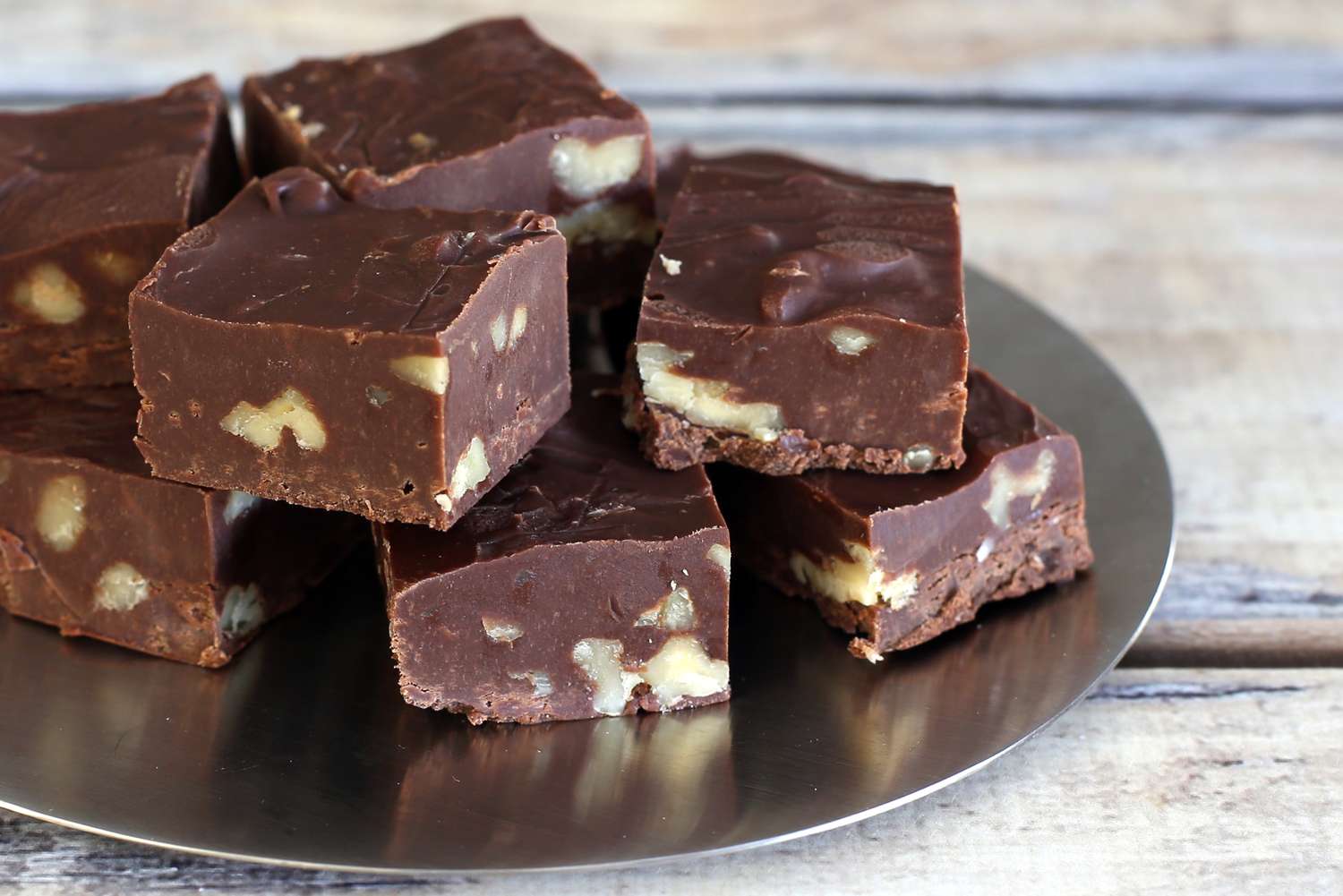
Indulging in a delicious piece of chocolate fudge is a delight that many of us can’t resist. The rich and creamy texture combined with the decadent taste makes it a favorite treat for both young and old alike. However, before you enjoy this sweet confection, it’s essential to know some important chocolate fudge nutrition facts. Understanding the nutritional profile of chocolate fudge can help you make informed choices about portion sizes and frequency of consumption. In this article, we will explore 19 important nutrition facts about chocolate fudge, covering everything from calories and fat content to vitamins and minerals. So, let’s dive in and discover the delicious and nutritious aspects of everyone’s favorite guilty pleasure, chocolate fudge!
Key Takeaways:
- Indulge in chocolate fudge in moderation due to its high calorie, fat, and sugar content. Enjoy it as a special treat while maintaining a balanced diet.
- Chocolate fudge is a nostalgic, comforting treat with cultural variations and pairing possibilities. Enjoy it in moderation for guilt-free pleasure.
Calories
A serving of chocolate fudge contains approximately 150 calories, making it a sweet treat that should be enjoyed in moderation.
Fat Content
Chocolate fudge is rich in fat, with an average of 8 grams per serving. The majority of the fat comes from the chocolate and dairy ingredients used to make the fudge.
Sugar Rush
Indulging in chocolate fudge means consuming a significant amount of sugar. On average, a serving of chocolate fudge contains around 20 grams of sugar.
Protein Power
While chocolate fudge is not a significant source of protein, it still contains a small amount, usually around 2 grams per serving.
Carbohydrate Load
A serving of chocolate fudge can contribute to a carb-heavy diet, as it typically contains around 25 grams of carbohydrates.
Cholesterol Check
Chocolate fudge can be high in cholesterol, with an average of 20 milligrams per serving. It’s important to monitor your cholesterol intake when enjoying this sweet treat.
Vitamin and Mineral Boost
While chocolate fudge may not be packed with essential vitamins and minerals, it does provide small amounts of calcium and iron.
Sodium Surprise
One surprising aspect of chocolate fudge is its sodium content. On average, it contains around 50 milligrams of sodium per serving.
Fiber-Filled?
Unfortunately, chocolate fudge is not a significant source of dietary fiber, with very minimal amounts present in each serving.
Allergen Alert
Chocolate fudge often contains dairy and nuts, which can be problematic for individuals with allergies or dietary restrictions.
Decadent Delights
One of the main attractions of chocolate fudge is its rich and indulgent taste. It’s the perfect treat for those with a sweet tooth.
Homemade vs Store-bought
Making chocolate fudge at home allows for more control over the ingredients and portion sizes. Store-bought fudge may contain additional additives and preservatives.
Pairing Possibilities
Chocolate fudge pairs well with a variety of flavors, such as vanilla, nuts, or even a sprinkle of sea salt to enhance the taste experience.
Melting Moments
When warmed, chocolate fudge becomes delightfully gooey and perfect for drizzling over ice cream or dipping fruit.
Storage Suggestions
To keep chocolate fudge fresh and delicious, store it in an airtight container in a cool and dry place. It can last for several weeks when properly stored.
Portion Control
Enjoying chocolate fudge in moderation is key to maintaining a balanced diet. Stick to recommended portion sizes to avoid excessive calorie intake.
Sinful Splurge
Indulging in a piece of rich, creamy chocolate fudge can be a guilt-free pleasure when balanced with a healthy lifestyle and regular exercise.
Cultural Variations
Chocolate fudge takes on different forms and flavors in various cultures around the world, each with its own unique twist on this beloved treat.
Emotional Connection
Chocolate fudge is often associated with feelings of comfort and nostalgia, evoking cherished memories of childhood and holiday celebrations.
Conclusion
In conclusion, chocolate fudge is a delicious treat that can be enjoyed in moderation. While it may not be the healthiest option due to its high sugar and calorie content, there are some surprising nutrition facts to consider. Dark chocolate fudge, in particular, contains antioxidants and may provide some health benefits when consumed in moderation.When indulging in chocolate fudge, it’s important to be mindful of portion sizes and to balance it with a nutritious diet. Also, consider opting for recipes that use higher quality ingredients, such as dark chocolate and natural sweeteners, to maximize the potential health benefits.Remember, moderation is key when it comes to enjoying chocolate fudge. So go ahead, savor the rich, gooey goodness of this delight, but remember to enjoy it in small quantities while maintaining a well-balanced diet.
FAQs
1. Is chocolate fudge high in calories?
Yes, chocolate fudge is typically high in calories. A small piece of chocolate fudge can contain around 100 to 150 calories.
2. Does chocolate fudge contain any nutrients?
While chocolate fudge is not a significant source of essential nutrients, dark chocolate fudge does contain antioxidants, which may provide some health benefits.
3. Can I enjoy chocolate fudge if I am on a diet?
While chocolate fudge is not the best choice for those on a strict diet, it can be enjoyed in moderation as part of a balanced eating plan. Be mindful of portion sizes and factor in the calories consumed from the fudge into your overall daily intake.
4. Does the type of chocolate used in fudge matter?
Yes, the type of chocolate used in fudge can make a difference in terms of nutrition. Dark chocolate fudge is generally a better option as it contains higher levels of antioxidants and is often lower in sugar compared to milk chocolate fudge.
5. Are there any healthier alternatives to traditional chocolate fudge?
Yes, there are healthier alternatives to traditional chocolate fudge. Some recipes use ingredients like dates, nuts, and natural sweeteners to create a healthier version of this indulgent treat. Look for recipes that use high-quality dark chocolate and minimal added sugars for a more nutritious option.
Was this page helpful?
Our commitment to delivering trustworthy and engaging content is at the heart of what we do. Each fact on our site is contributed by real users like you, bringing a wealth of diverse insights and information. To ensure the highest standards of accuracy and reliability, our dedicated editors meticulously review each submission. This process guarantees that the facts we share are not only fascinating but also credible. Trust in our commitment to quality and authenticity as you explore and learn with us.


